Exclusion of Disabled People: A Part of Our Ugly History
VerifiedAdded on 2022/09/07
|6
|1085
|94
Essay
AI Summary
This essay, titled "Exclusion of Disabled People: A Part of Our Ugly History," examines the historical and ongoing exclusion of disabled individuals in Australia. It begins by highlighting the prevalence of disability and its impact on individuals' lives, emphasizing the role of societal attitudes, values, and beliefs in shaping the experiences of disabled people. The essay explores barriers to inclusion, including inaccessible infrastructure, discriminatory attitudes, and failures in legislation. It then delves into the social model of disability, contrasting it with the medical model and highlighting its focus on removing societal barriers. The essay also discusses the negative attitudes of society and healthcare staff, which hinder the population to live an independent life. Furthermore, it references initiatives like the National Disability Strategy and the National Disability Insurance Scheme, emphasizing the importance of healthcare professionals, community involvement, and policy development. The essay concludes by advocating for a positive attitude from the community, improved accessibility, and ongoing training to support disabled people and promote their independence.
1 out of 6
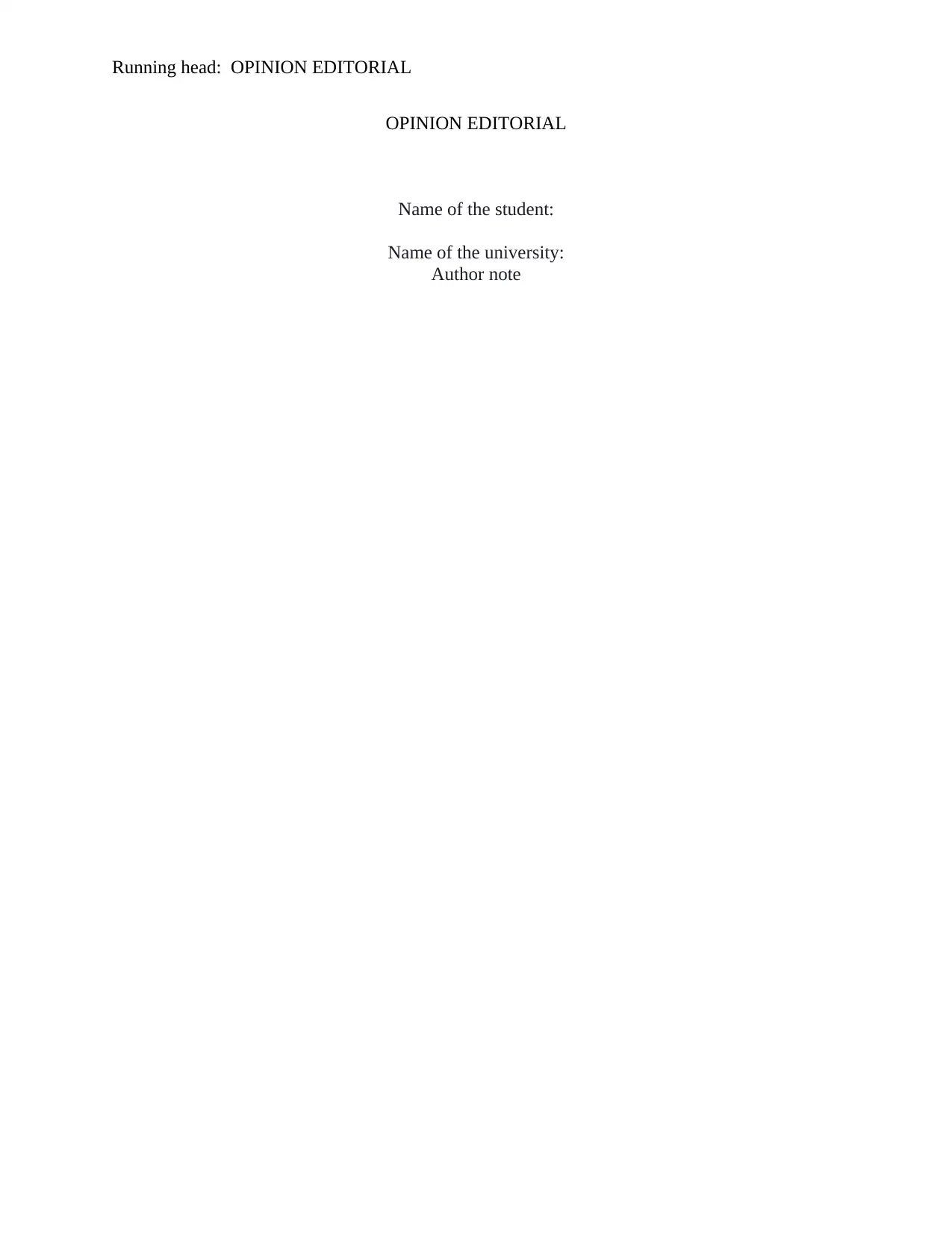
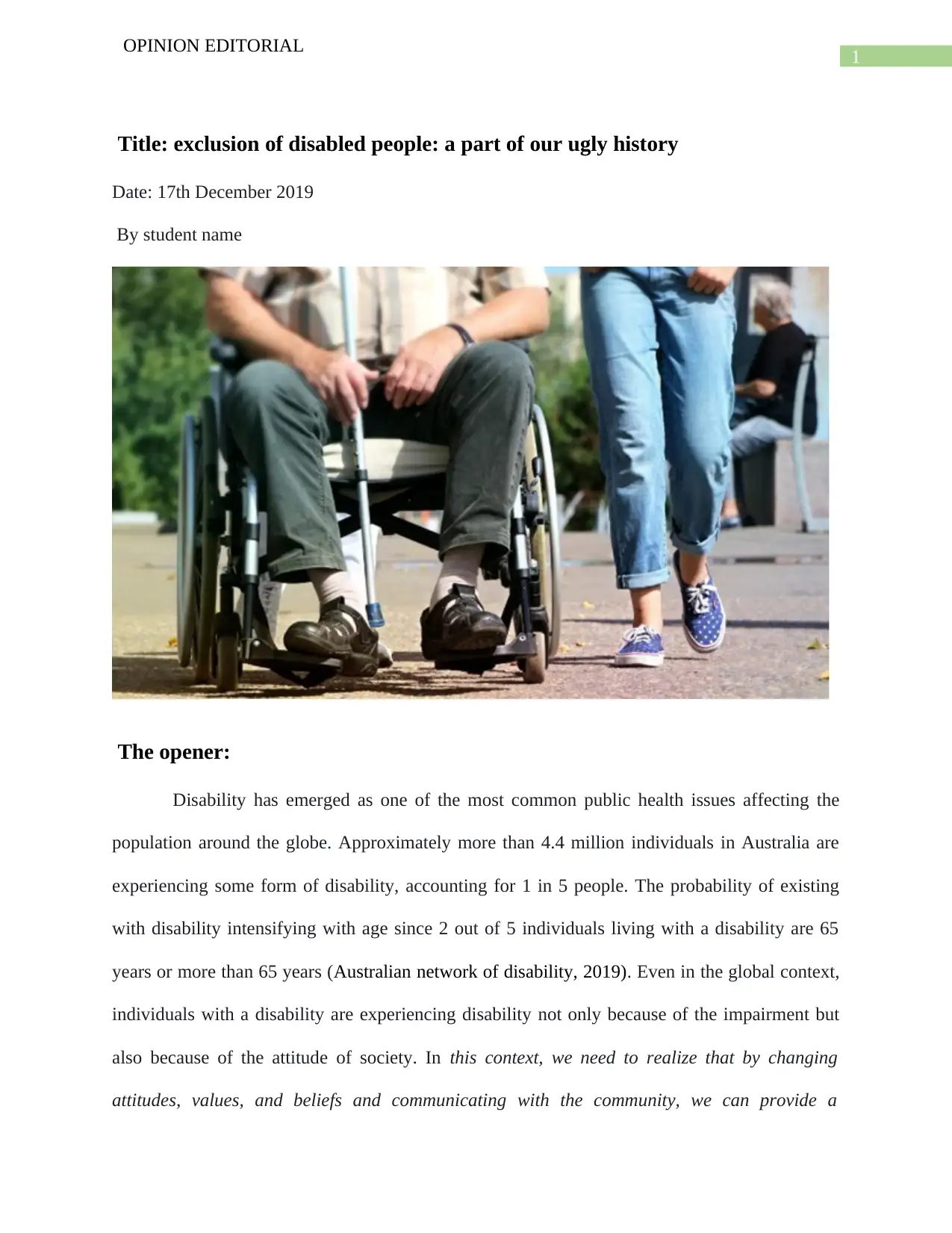
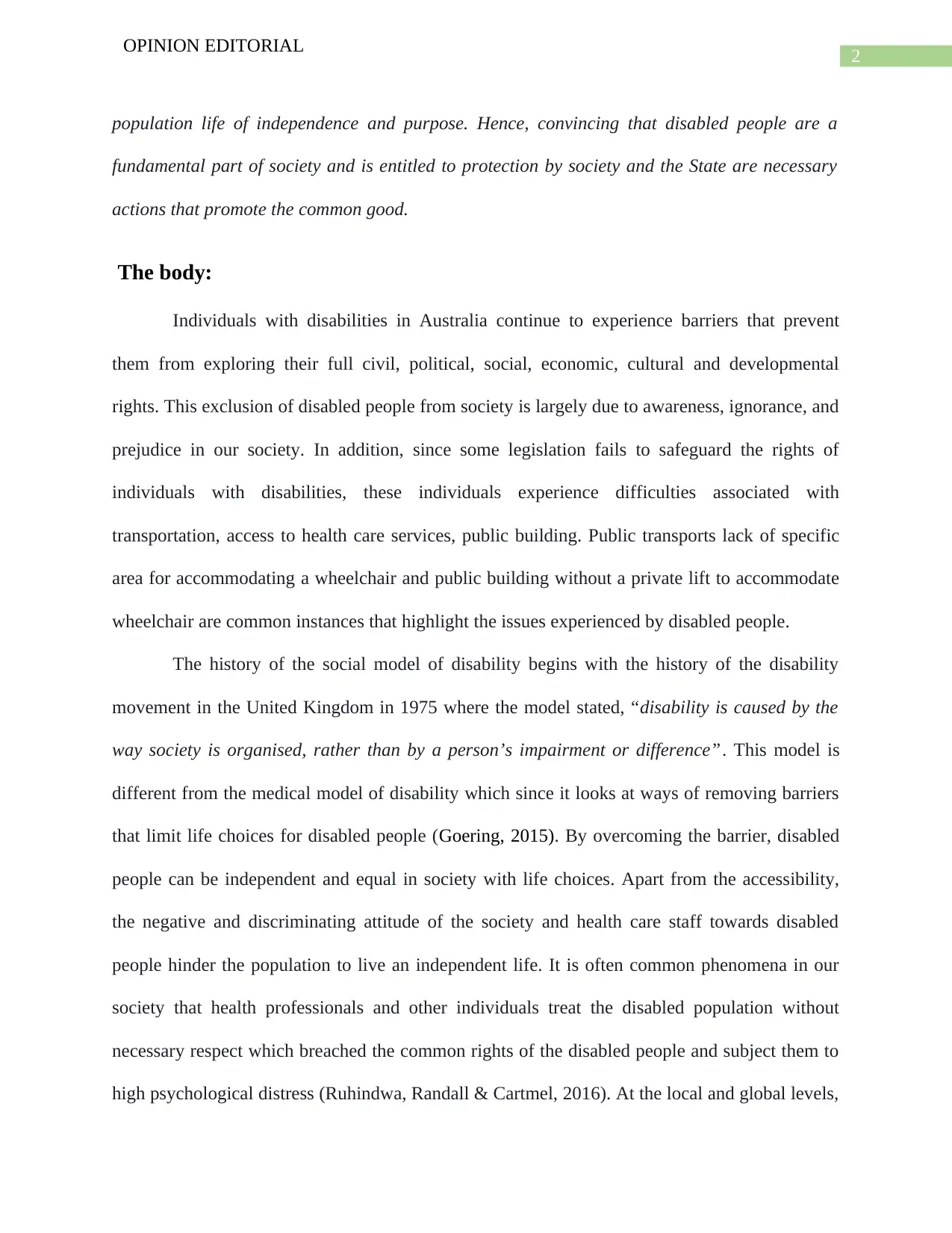

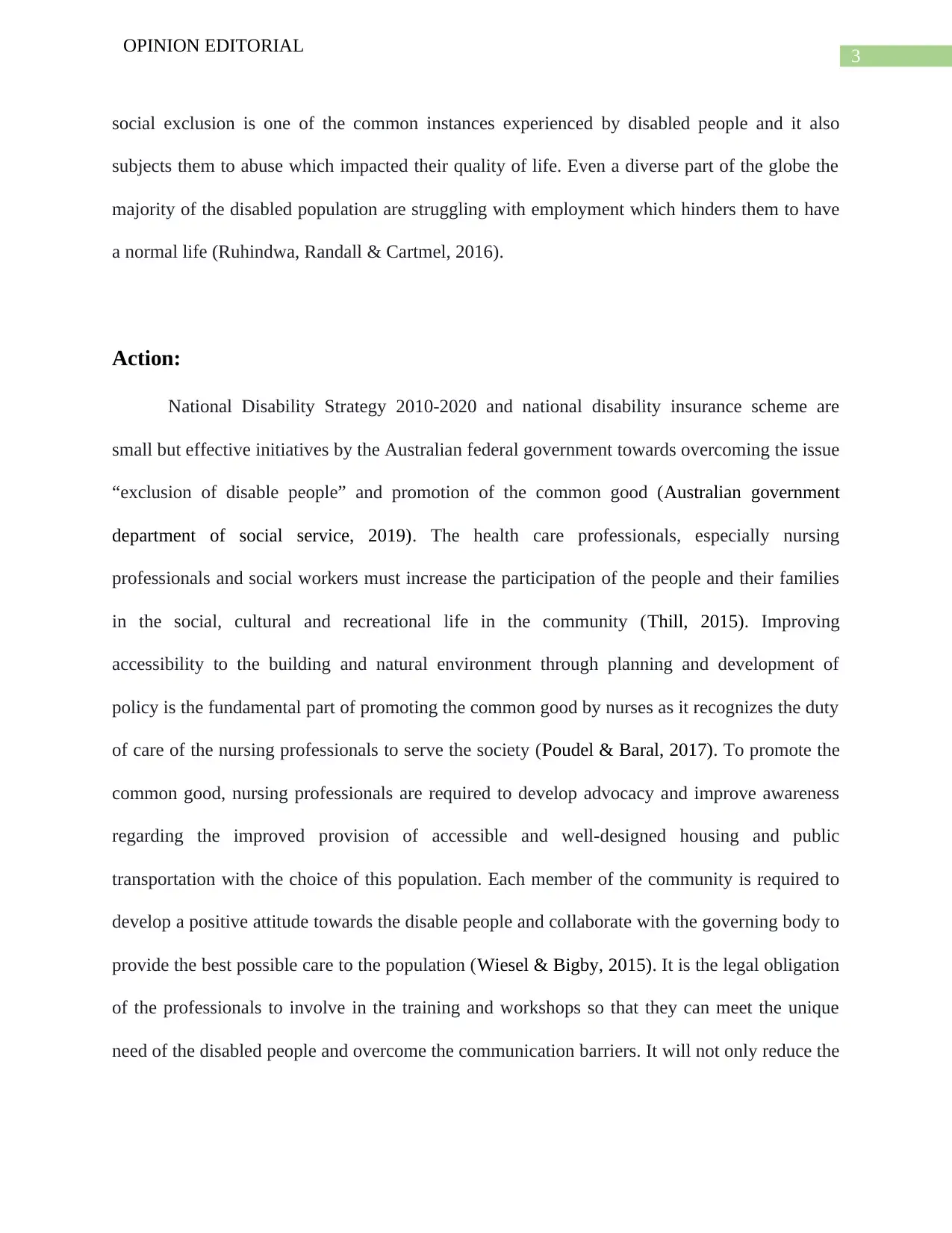
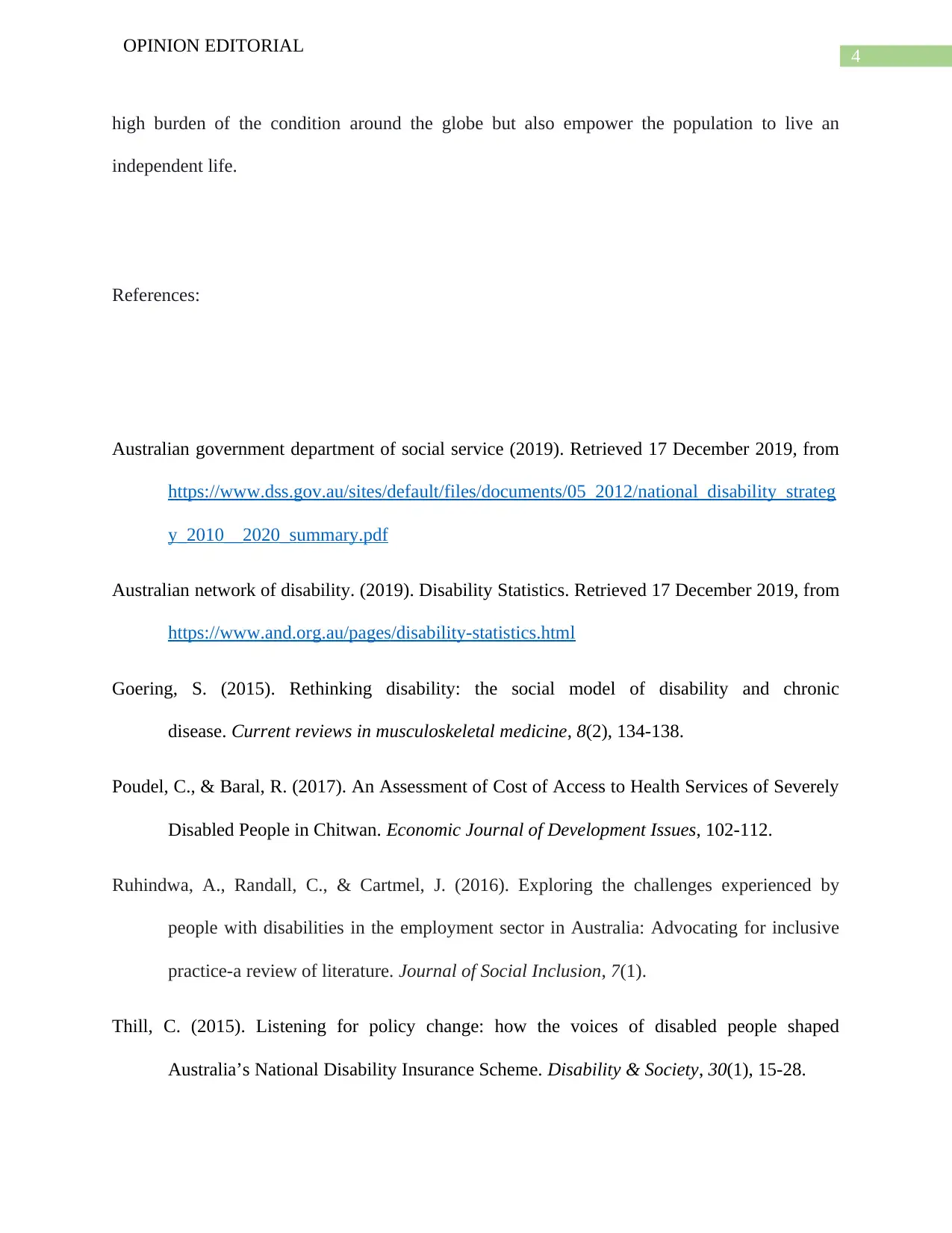
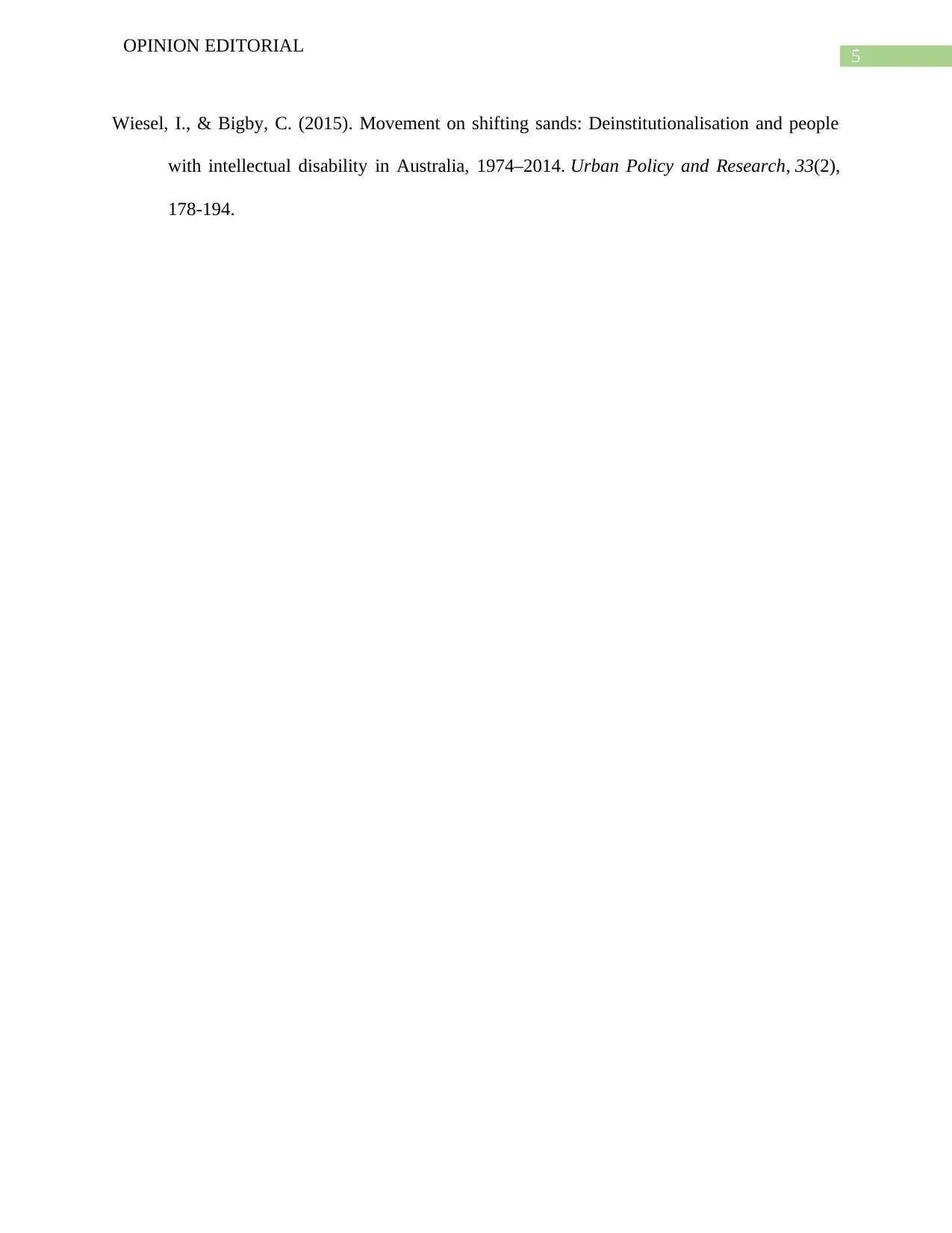






![[object Object]](/_next/static/media/star-bottom.7253800d.svg)